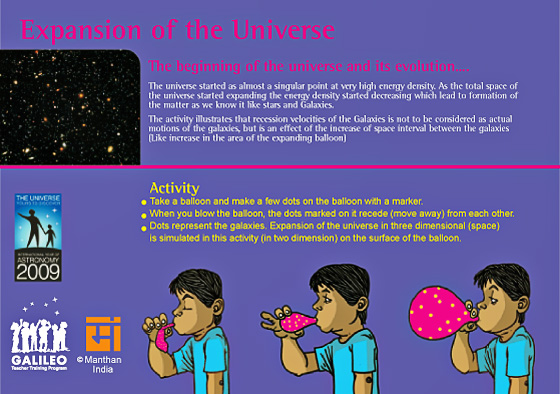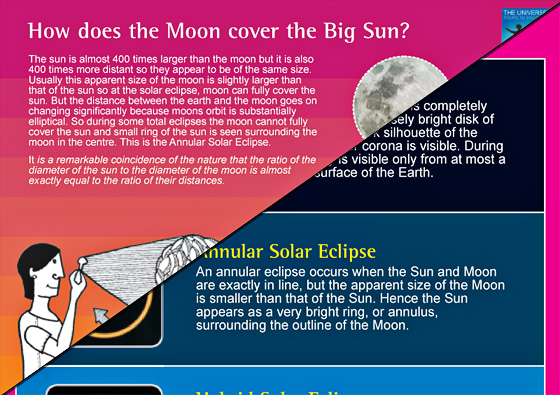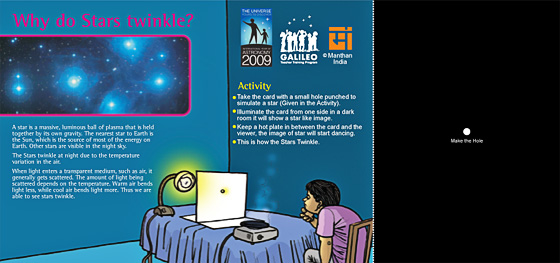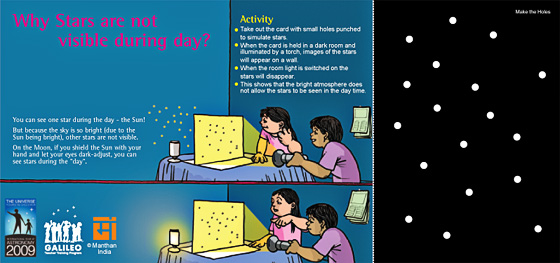Archive of GTTP resources
Celestia

Free space simulation that lets you explore our universe in three dimensions.
ALADIN

Aladin is an interactive software sky atlas allowing the user to visualize digitized astronomical images, superimpose entries from astronomical catalogues or databases, and interactively access related data and information from the Simbad database, the VizieR service and other archives for all known sources in the field.
Expansion of the Universe

This is a very simple hands-on activity to show the expansion of the Universe. It uses dots on a balloon to show that the observed recession velocity of galaxies can be explained by the expansion of the Universe as a whole.
How does the Moon cover the Big Sun?

This is a very simple hands-on activity to show why a small body, like the Moon, can cover a much larger object, like the Sun. The apparent size of an object depends on the its real size and the distance it is from us. In the case of the Sun and the Moon, their sizes and distances are such, that their apparent size on the sky is very similar. That is why Total Solar Eclipses exist.
Why do Stars twinkle?

This is a very simple hands-on activity to show why stars twinkle. A small hole on a cardboard, a light source and a heat source in a darkened room, are all that is needed to simulate the effect of the earth atmosphere on the observation of the stars.
Why Stars are not visible during the day?

This is a very simple hands-on activity to show why the stars are not visible during the day. Turning the lights on in a darkened room, where you were using a torchlight and a cardboard with several small holes, to simulate stars in the night sky, will make the stars disappear.






